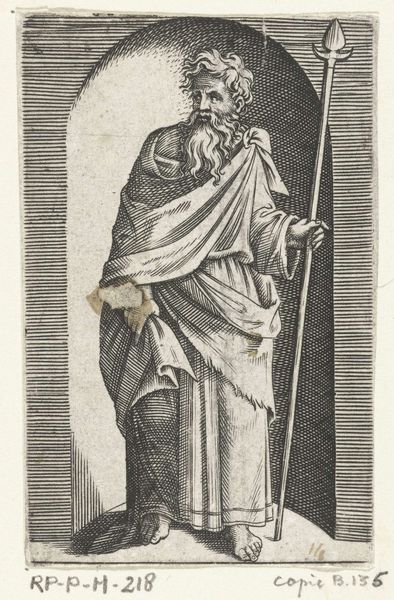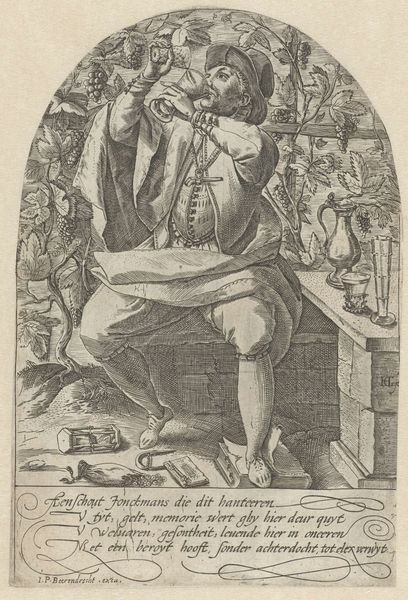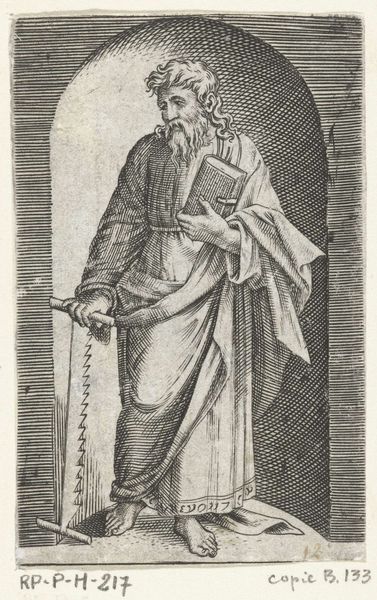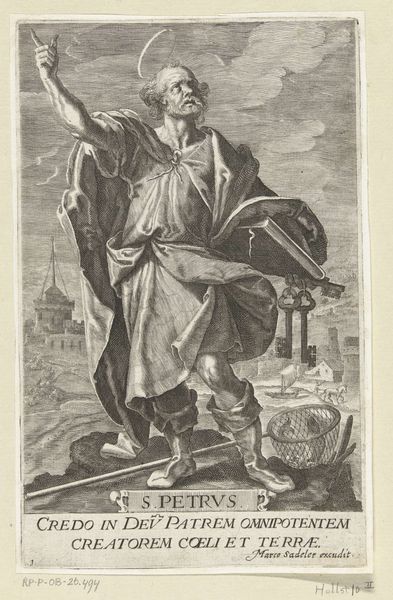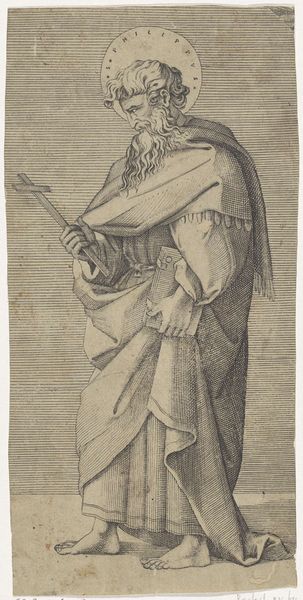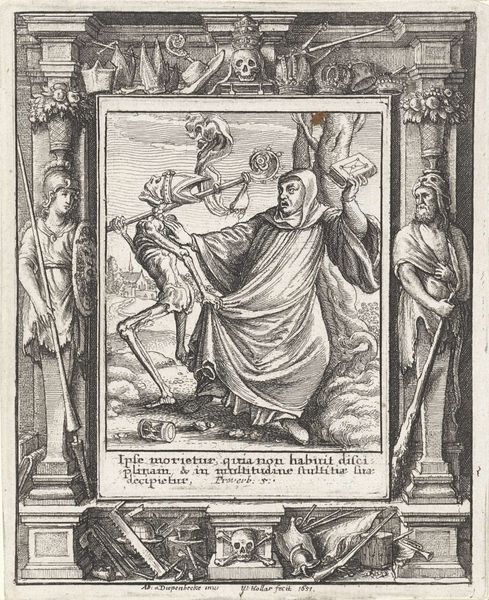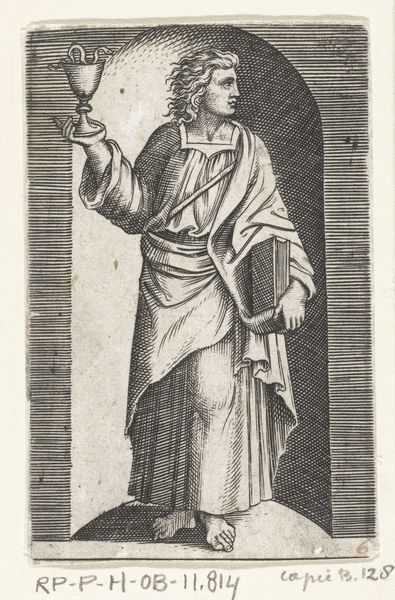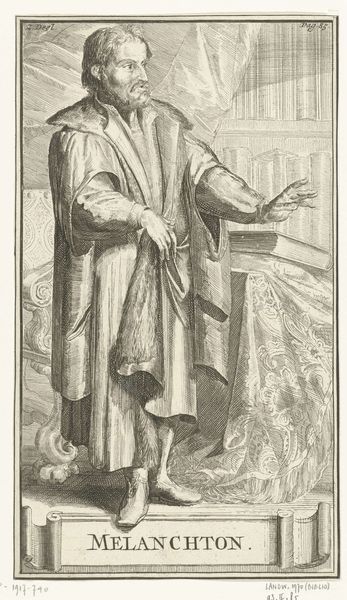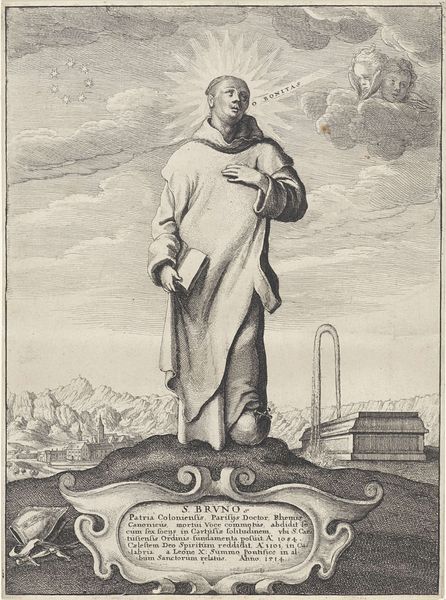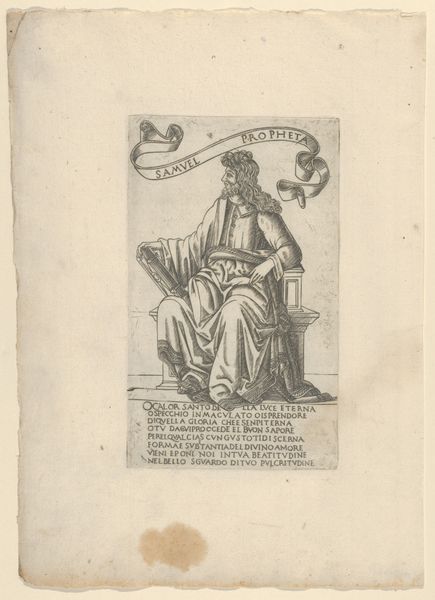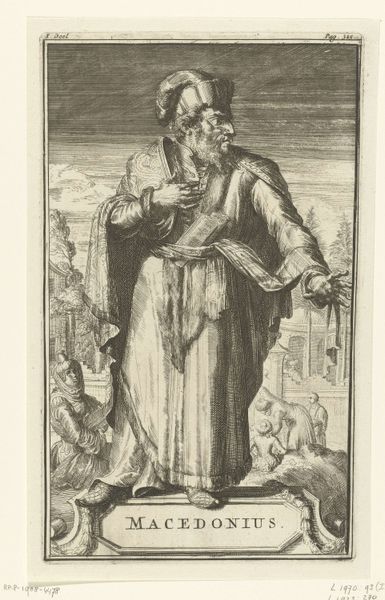
print, engraving
#
portrait
#
baroque
# print
#
old engraving style
#
history-painting
#
engraving
Dimensions: height 195 mm, width 133 mm
Copyright: Rijks Museum: Open Domain
Curator: This engraving by Arnold van Westerhout, made after 1695, depicts Saint Augustine of Hippo alongside his tomb. It's fascinating how the artist combines portraiture with a historical narrative in one image. Editor: It has a reverent tone. The saint, bathed in light, is juxtaposed with the detailed depiction of what looks like a rather ornate tomb. There is an interplay of illumination, particularly with the flame he holds, and the somberness of the sepulcher. Curator: Indeed, it captures the baroque era’s flair for the dramatic and didactic. Note the inscriptions detailing Augustine's resting place - first in a silver coffin provided by King Liutprand, and later enshrined by Augustinian monks. It speaks volumes about the public veneration of saints. The imagery is tied to specific moments and players in the Augustine historical narrative. Editor: Symbolically, that flame—typically seen representing the burning love of God, the heart aflame with piety— is compelling next to a sepulcher, especially given Augustine's complex inner life reflected in his writings. The pen and ink document, contrasting with the flambeau, reminds me of the duality between Augustine's actions versus his writings and influence on the modern church. The sarcophagus, emblazoned with an emblem, emphasizes legacy and containment. The entire layout of the image encourages reflection on mortality and spiritual legacy. Curator: What I find striking is the print’s dissemination potential, typical for this period. An image like this circulated broadly, visually reinforcing Augustinian devotion and ecclesiastical authority in the eyes of a wide audience. Consider how such engravings amplified Augustine's persona and the Order’s claim to his legacy across diverse communities. Editor: I agree. Furthermore, the contrasts - silver against stone, the earthly coffin below against the Saint ascending heavenwards above - enhance the sense of Augustine bridging different worlds, then and now. One also has to remember his influence as an interpreter of Plato and Neoplatonism with respect to Christian doctrine. The images of mortality and of divine power highlight Augustine's central philosophical struggles and triumphs. Curator: The print serves as a visual testament to how influential institutions use images to cultivate and promote specific ideological frameworks. Editor: Seeing this interplay has made me rethink how we understand cultural icons whose narratives have become tightly knit to certain agendas or institutions. Thank you.
Comments
No comments
Be the first to comment and join the conversation on the ultimate creative platform.
